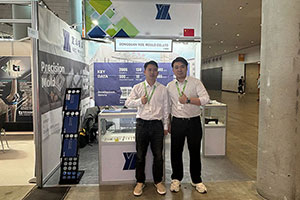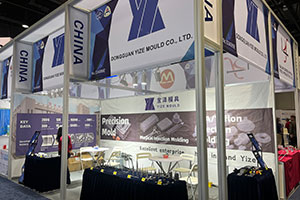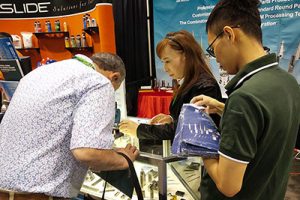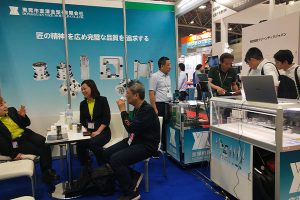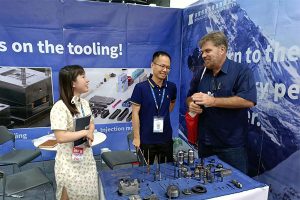Unveiling the Secrets of Tungsten Carbide’s Composition: The Foundation of Its Performance and Applications
In the grand landscape of modern industry, tungsten carbide stands out like a shining star, playing an indispensable and irreplaceable key role in numerous fields with its unique physical and […]
In the grand landscape of modern industry, tungsten carbide stands out like a shining star, playing an indispensable and irreplaceable key role in numerous fields with its unique physical and chemical properties. This high-performance cemented carbide material, renowned for its excellent properties such as high hardness, wear resistance, and corrosion resistance, has become an indispensable “tool” in industrial production. And all these outstanding properties owe a great deal to its carefully formulated composition. Next, let’s delve deep into the composition of tungsten carbide and uncover its mysteries.
I. The Basic Components of Tungsten Carbide: A Perfect Partnership Between Tungsten Carbide and Metal Binders
Tungsten carbide, also commonly known as cemented carbide, is mainly composed of two core parts: tungsten carbide (WC) and metal binders (such as cobalt (Co), nickel (Ni), and iron (Fe)).
Notre activité : pièces en carbure, pièces de moule, moules d'injection médicale, moules d'injection de précision, moulage par injection de téflon PFA, raccords de tubes PFA. email : [email protected],whatsapp:+8613302615729.
Tungsten carbide serves as the main hardening phase in tungsten carbide materials, accounting for an overwhelming majority of the entire material, with a content usually exceeding 80%. It is a compound with high hardness, wear resistance, and thermal stability, with a hardness second only to that of diamond, making it one of the hardest substances in nature. The size and shape of tungsten carbide particles are like crucial components in a precision instrument, having a profound impact on the performance of tungsten carbide. Generally speaking, the finer the particles, the higher the hardness and wear resistance of tungsten carbide; while the shape of the particles is related to the cutting performance and impact resistance of tungsten carbide.
Metal binders act as the “glue masters” in tungsten carbide. Their main function is to tightly bond the tungsten carbide particles together, forming a dense tungsten carbide material. Different types and contents of metal binders result in different performances of tungsten carbide. Common metal binders include cobalt (Co), nickel (Ni), and iron (Fe). Among them, cobalt can be regarded as the “star player” among metal binders. This is because it has good wettability and bonding force with tungsten carbide, capable of forming a strong metallurgical bond. It can also significantly improve the toughness and impact resistance of tungsten carbide. Nickel and iron and other metal binders are mainly used in tungsten carbide products for specific applications to meet different performance requirements.
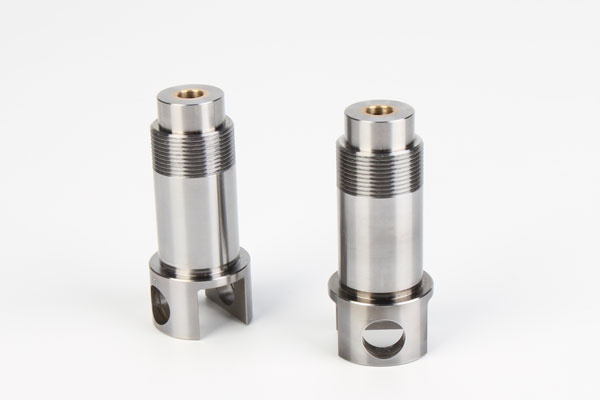
II. Other Components in Tungsten Carbide: The “Secret Weapons” for Performance Enhancement
Besides the two main “forces” of tungsten carbide and metal binders, tungsten carbide may also contain some other components, such as titanium carbide (TiC) and niobium carbide (NbC). These are like the “secret weapons” for performance enhancement, capable of taking the performance of tungsten carbide to a higher level.
Titanium carbide is a compound with high hardness, wear resistance, and thermal stability, with a hardness second only to that of tungsten carbide. Adding an appropriate amount of titanium carbide to tungsten carbide is like injecting a powerful energy into it, which can improve its hardness and wear resistance, while reducing the thermal expansion coefficient and enhancing thermal stability. In addition, titanium carbide can also improve the cutting performance and impact resistance of tungsten carbide.
Niobium carbide is also a compound with high hardness, wear resistance, and thermal stability. Adding an appropriate amount of niobium carbide to tungsten carbide can enhance its hardness and wear resistance, improve the cutting performance and impact resistance. Moreover, it can reduce the thermal expansion coefficient of tungsten carbide and increase its oxidation resistance.
III. The Ratio and Performance of Tungsten Carbide’s Components: The Art of Precise Regulation
The performance of tungsten carbide is like a delicate painting, which depends on the ratio of its components. Generally speaking, the higher the content of tungsten carbide, the higher the hardness and wear resistance of tungsten carbide; while the content of metal binders affects the toughness and impact resistance of tungsten carbide. Therefore, when preparing tungsten carbide, it is necessary to carefully select the appropriate component ratio according to specific application requirements, just like an artist mixing pigments. For example, in applications that require high hardness and wear resistance, the content of tungsten carbide can be appropriately increased; while in applications that require better toughness and impact resistance, the content of metal binders can be appropriately increased.
However, the component ratio of tungsten carbide is not something that can be adjusted arbitrarily. It is also restricted by factors such as the preparation process and cost. In actual production, it is necessary to comprehensively consider various factors and optimize the component ratio to achieve the best performance and cost – effectiveness.
IV. Application Fields of Tungsten Carbide: A “Star Material” in Multiple Fields
With its excellent performance, tungsten carbide shines brightly in multiple fields. In the metal cutting field, tungsten carbide tools are like highly skilled “craftsmen”. With their high hardness and wear resistance, they are widely used in the processing of various metal materials, providing a strong guarantee for the efficient production of the manufacturing industry. In the mold manufacturing field, tungsten carbide molds, with their high hardness, wear resistance, and good toughness, have become the first – choice materials for manufacturing various precision molds, helping the mold industry to create more accurate and durable products. In the aerospace field, tungsten carbide products, with their high thermal stability and excellent corrosion resistance, are used to manufacture key components such as engine blades and turbine disks, ensuring the safe flight of aircraft. In the petrochemical field, tungsten carbide products, with their excellent corrosion resistance and high hardness, are used to manufacture key equipment such as valves and pipelines, ensuring the safety and stability of petrochemical production.
V. Conclusion: Tungsten Carbide Has a Bright Future
The composition of tungsten carbide is at the core of its performance and applications. By carefully formulating the ratio of tungsten carbide, metal binders, and other components, we can prepare tungsten carbide products with different performances and applications to meet various complex and diverse industrial needs. With the continuous progress of technology and the sustained development of industry, the composition and performance of tungsten carbide will be further optimized and improved. It is believed that in the future industrial arena, tungsten carbide will continue to leverage its unique advantages, providing a more solid foundation for the development of modern industry and writing a more glorious chapter.


